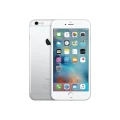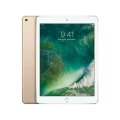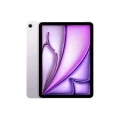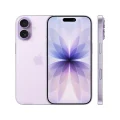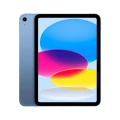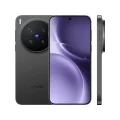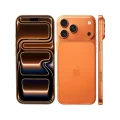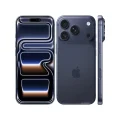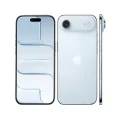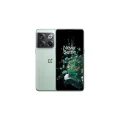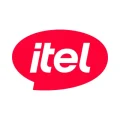- Home
- All Products
- Apple
- Apple iPhone 3G
Apple iPhone 3G


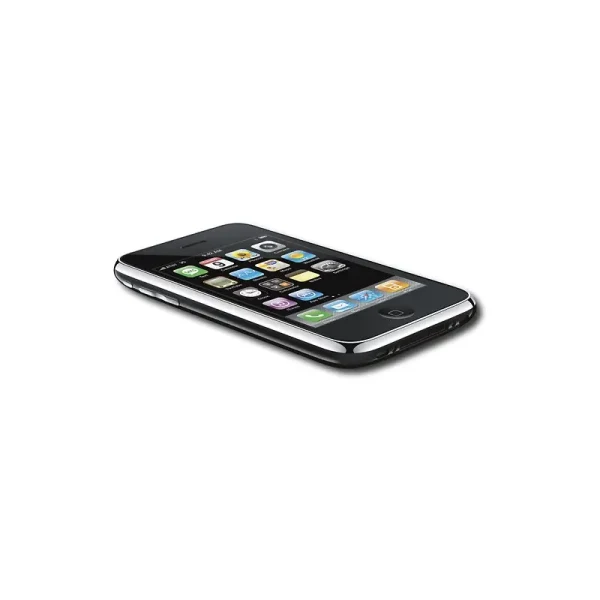

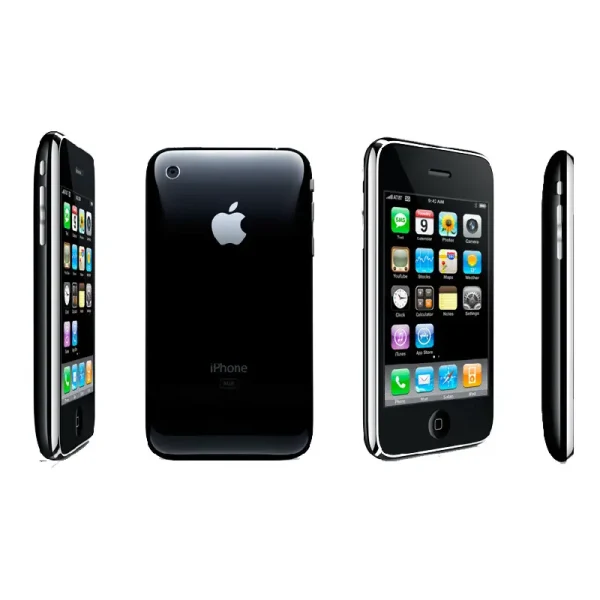
-
Battery: Li-Ion 1220 mAh
-
RAM: 128MB, 128MB
-
Storage: 8GB, 16GB
-
Display: TFT, 3.5 inches
-
Camera: Rear 2 MP, and Front N/A
-
OS: iOS, upgradable to iOS 4.2.1
Full Specifications
Price
| Official | 10999 BDT 128MB/16GB Approx. |
General
| Model | Apple iPhone 3G |
| Announced | 2008, June |
| Released | 2008, July |
| Status | Discontinued |
Design
| Dimensions | 115.5 x 62.1 x 12.3 mm (4.55 x 2.44 x 0.48 in) |
| Weight | 133 g (4.69 oz) |
| SIM SIM (Subscriber Identity Module) is a small card that contains mobile network subscriber's account information. This allows the phone using the card to attach to a mobile network. The SIM card is most commonly associated with GSM and UMTS mobile networks. Moving a SIM card from one phone to another allows a subscriber to switch mobile phones without having to contact their mobile network carrier. SIM cards can also be used by a phone to store limited amounts of data, such as phone numbers and text messages. |
Mini-SIM |
| Colors |
Black(8/16 GB), White (16 GB) |
Display Specification
| Display Type Display Technology => A number of display technologies and types used in mobile phones => TFT (Thin Film Transistor), IPS (In-Place Switching), OLED (Organic Light Emitting Diode), AMOLED (Active-Matrix Organic Light-Emitting Diode), Super AMOLED (an even advanced version of AMOLED), Resistive Touchscreen (Resistive touchscreens contain two layer of conductive material with a very small gap between them which acts as a resistance), Capacitive Touchsceen (Capacitive touchscreen technology consists of a layer of glass coated with a transparent conductor) | TFT |
| Size | 3.5 inches, 36.5 cm2 |
| Resolution | 320 x 480 pixels, 3:2 ratio |
| Pixel Density Pixel Density (PPI) is refers to the concentration of pixels on a particular display, measured in pixels per inch (ppi). Pixel density is calculated by dividing the diagonal pixel resolution of a display by its diagonal size, higher pixel density better display quality. | 165 ppi density |
| Display Protection Display Protection => Gorilla Glass is a special alkali-aluminosilicate glass shield with exceptional damage resistance that helps protect mobile displays from scratches, drops, and bumps of everyday use, It is always better to go for a smartphone with Gorilla Glass for that added protection and peace of mind. | Corning Gorilla Glass, oleophobic coating |
| Features | 50.9% screen-to-body ratio |
Platform
| Operating System OS => Every computer system run on a base software called Operating System (OS). Operating System controls all basic operations of the computer (such as smartphone, PDAs, tablet computers and other handheld devices). The Operating System allows the user to install and run third party applications (apps), apps are used to add new functionality to the device. | iOS, upgradable to iOS 4.2.1 |
| Chipset Chipset is a group of integrated circuits designed to perform one or a more dedicated functions, often with real time computing constraints, Popular smartphones are equipped with more advanced embedded chipsets that can do many different tasks depending on their programming. | - |
| CPU CPU (Central Processing Unit) mostly known as processors, CPU processes instructions in order to carry out certain functions that make your device operate properly. Processors are often described as the brain of computers, smartphones and tablets, Smartphones and tablets rely on processors to carry out their every task, Processors are an incredibly important factor in selecting any type of computing device, including your smartphone. | 412 MHz ARM 11 |
| GPU GPU (Graphics Processing Unit) is a single-chip processor designed to rapidly manipulate and alter memory to accelerate the creation of images in a frame buffer intended for output to a display, This includes things such as lighting effects, object transformations, and 3D motion. | PowerVR MBX |
Main Camera
| Camera Setup | Single |
| Resolution |
2 MP |
| Features | - |
| Video | No |
Selfie Camera
| Camera Setup | N/A |
Network & Connectivity
| Technology | GSM / HSPA |
| Speed | HSPA |
| Wi-fi Wi-Fi is a popular wireless networking technology using radio waves to provide high-speed network connections that allows devices to communicate without cords or cables, Wi-Fi is increasingly becoming the preferred mode of internet connectivity all over the world. | Wi-Fi 802.11b/g |
| Bluetooth Bluetooth is a wireless communications technology for exchanging data between mobile phones, headsets, computers and other network devices over short distances without wires, Bluetooth technology was primarily designed to support simple wireless networking of personal consumer devices. | 2.0, A2DP (headset support only) |
| NFC NFC (Near field communication) is a set of standards for smartphones and similar devices to establish peer-to-peer radio communications with each other by touching them together or bringing them into proximity, usually no more than a few inches. | No |
| Positioning |
GPS, A-GPS |
| FM Radio | No |
| USB | 2.0 |
| 2G Network |
GSM 850 / 900 / 1800 / 1900 |
| 3G Network |
HSDPA 850 / 1900 / 2100 |
Battery
| Battery Type Battery Type => Cell phones run on various kinds of batteries depending on the manufacturer, phone size or shape and features. There are basically four types of cell phone batteries => Lithium Polymer, Lithium Ion, Nickel Metal Hydride and Nickel Cadmium. | Li-Ion (Lithium Ion) |
| Capacity Battery Capacity is a measure (typically in Amp-hr) of the charge stored by the battery, and is determined by the mass of active material contained in the battery. The battery capacity represents the maximum amount of energy that can be extracted from the battery under certain conditions. | 1220 mAh |
| Removable | No |
| Charging | - |
| Wireless Charging Wireless Charging (Inductive Charging) uses an electromagnetic field to transfer energy between two objects. This is usually done with a charging station. Energy is sent through an inductive coupling to an electrical device, which can then use that energy to charge batteries or run the device. | No |
Multimedia
| Loudspeaker | Yes |
| Audio Jack | Yes |
| Audio Features |
Vibration, proprietary ringtones |
Storage
| Card Slot Memory Card Slot is a special slot for inserting a memory card. Memory cards allow you to expand the phone's built-in memory, A memory card (sometimes called a flash memory card or a storage card) is a small storage medium used to store data such as text, pictures, audio, and video, for use on small, portable or remote computing devices such as mobile phones, mp3 players, digital cameras. | No |
| Internal Storage Internal Storage is a data storage space (flash memory) mostly used in smartphones, tablets and other electronic devices where operating system, apps, music, photos, videos, files and other user data Is stored. |
8GB 128MB RAM, 16GB 128MB RAM |
Sensors
| Fingerprint | No |
| Other Sensors | Accelerometer, proximity |
About the Apple iPhone 3G
The Apple iPhone 3G, launched in July 2008, was a pivotal step in the evolution of Apple’s smartphone lineup, building on the original iPhone with faster 3G connectivity, GPS support, and improved software capabilities. Weighing 133g and measuring 12.3mm in thickness, it maintained a compact, pocket-friendly design while offering a 3.5-inch TFT display with a 320×480 pixel resolution (~165 ppi). Although modest by today’s standards, the screen delivered clear visuals for browsing, messaging, and media. Under the hood, the iPhone 3G was powered by a 412 MHz ARM 11 CPU with PowerVR MBX GPU and 128MB RAM, enabling smooth performance for iOS tasks at the time. It ran iOS, upgradeable to iOS 4.2.1, supporting basic apps, email, web browsing, and multimedia playback.
The device offered 8GB or 16GB storage options, but did not include expandable memory. Its 2MP rear camera allowed basic photography, although there was no video recording capability or front-facing camera. Connectivity options included 3G, GPS/A-GPS, Wi-Fi 802.11b/g, Bluetooth 2.0, and USB 2.0. The non-removable 1220 mAh battery provided adequate usage for its era, offering several hours of talk time and standby. The iPhone 3G is ideal for collectors, tech enthusiasts, or users interested in classic iOS devices. Its introduction of 3G and GPS laid the foundation for future Apple innovations, making it a historically significant device.
Main Key Features
- 3.5-inch TFT display, 320×480 pixels (~165 ppi)
- iOS, upgradable to iOS 4.2.1
- 412 MHz ARM 11 CPU, PowerVR MBX GPU
- 128MB RAM, 8GB/16GB internal storage
- Rear 2MP camera, no video recording
- 3G connectivity, Wi-Fi 802.11b/g, Bluetooth 2.0
- GPS and A-GPS support
- Non-removable 1220 mAh battery
Pros & Cons
Pros:
- First iPhone with 3G connectivity
- GPS navigation support
- Lightweight and compact design
- Solid performance for early iOS apps
Cons:
- Small and low-resolution display by modern standards
- Limited RAM and storage
- No video recording or front camera
- Battery life is modest for heavy usage
Why Choose This Phone?
The iPhone 3G is a classic collector’s device that introduced 3G and GPS functionality, making it a historic milestone in Apple’s iPhone lineup.
Opinion
The iPhone 3G was revolutionary in 2008, providing essential mobile connectivity and paving the way for future iPhone innovations. Today, it remains an iconic device for enthusiasts and tech historians.
See Another Model:
- Apple iPhone 17
- Apple iPhone Air
- Apple iPhone 17 Pro
- Apple iPhone 17 Pro Max
- Apple iPhone 16 Pro Max
- Apple iPhone 16 Pro
FAQs about Apple iPhone 3G
Q. Does the iPhone 3G record video?
A: No, it does not support video recording.
Q. Can it run modern apps?
A: No, it only supports apps compatible with iOS 4.2.1.
Q. Does it have a front-facing camera?
A: No, it only has a rear 2MP camera.
Q. How long is the battery life?
A: Up to several hours of talk time; standby lasts longer.
Q. Is it worth buying today?
A: Yes, for collectors or tech enthusiasts, but not for daily smartphone use.
Give Your Review
Disclaimer Note
You can write your own disclaimer from APS Settings -> General -> Disclaimer Note.
